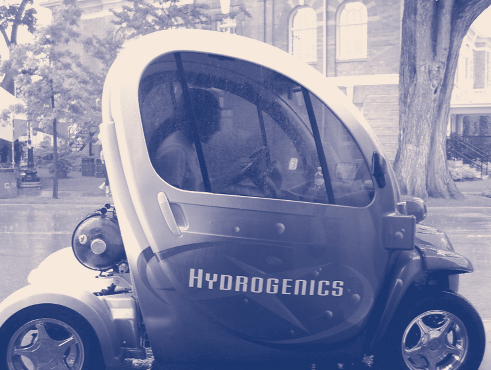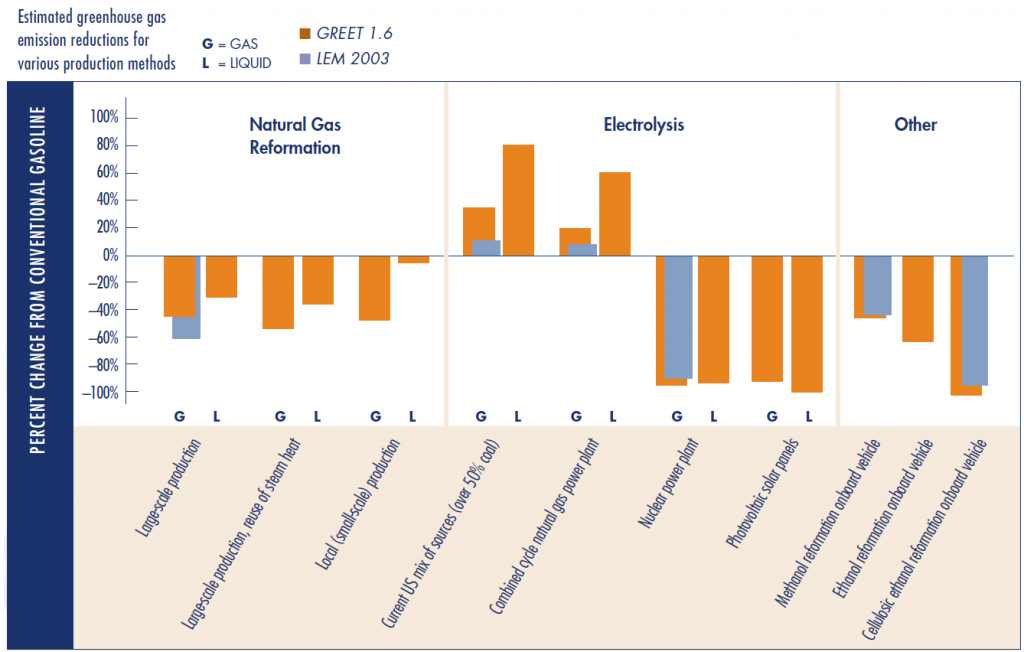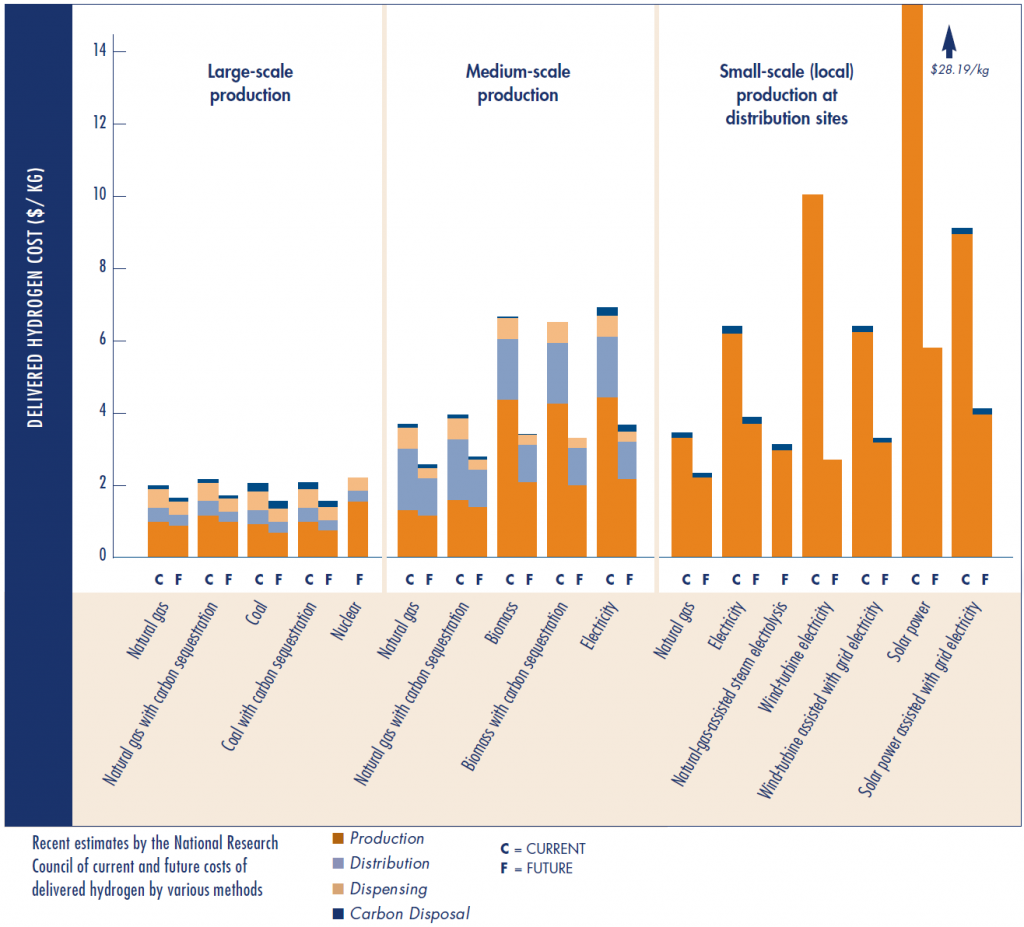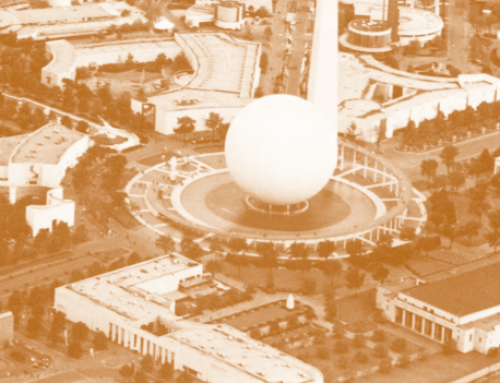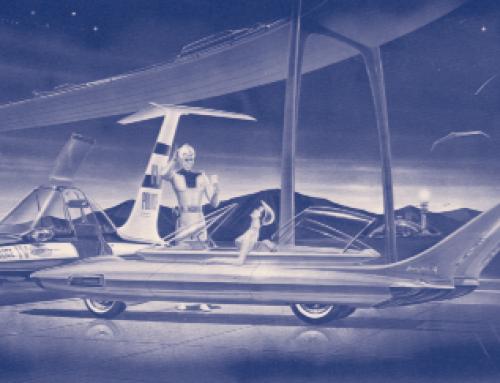[sharelines]California explores how to advance hydrogen and fuel cell research, development, and commercialization.
The state of California has for many years been at the vanguard of environmental and energy policies, creating strict standards that have afterwards been adopted by other states. Today is no different.
Despite a severe budget crunch, California Governor Arnold Schwarzenegger has recommitted the state to a variety of clean energy goals, including deregulation and liberalization of electricity markets, increased energy efficiency in new and retrofit state buildings, and reductions in greenhouse gas emissions. The state has also outlined a major solar-power initiative and a Renewable Portfolio Standard that sets goals for producing electricity from renewable sources. And in pursuit of the elusive zero-emission vehicle — the ZEV — the governor has called for California to take a leading role in advancing the commercialization of hydrogen-powered vehicles with the “California Hydrogen Highway Network.”
 In the context of generally progressive energy and environmental policy, and given pressing energy and environmental issues in the state, the effort to advance hydrogen vehicles seems appropriate. However, in the context of severe budget problems and a transportation system that is starved for funding, the California Hydrogen Highway Network could seem an extravagance—whether or not it is a fundamentally good idea. Furthermore, the introduction of a new vehicle type that requires a novel refueling infrastructure is an enormous challenge that will take combined efforts of many stakeholder groups to achieve.
In the context of generally progressive energy and environmental policy, and given pressing energy and environmental issues in the state, the effort to advance hydrogen vehicles seems appropriate. However, in the context of severe budget problems and a transportation system that is starved for funding, the California Hydrogen Highway Network could seem an extravagance—whether or not it is a fundamentally good idea. Furthermore, the introduction of a new vehicle type that requires a novel refueling infrastructure is an enormous challenge that will take combined efforts of many stakeholder groups to achieve.
Several key issues confront us in the proposed transition to a hydrogen-powered transportation future. We still do not know how much an entirely new fueling infrastructure would cost, and there is always a risk that we might invest in a new technology that does not catch on as quickly as we expect. Competing technologies—such as hybrid gasoline-electric vehicles (HEVs), “plug-in” HEVs, and advanced battery-powered electric vehicles—continue to improve, and could overshadow hydrogen in the market. Technical issues with hydrogen technologies remain challenging; for example, for hydrogen vehicles to achieve a driving range comparable to conventional vehicles, adequate on-board hydrogen storage is essential, and remains elusive. Driving down costs of fuel cell systems without diminishing durability is proving difficult. New codes and standards for safety and efficiency have progressed but more work remains. And the critical issue of how to produce hydrogen both economically and with low environmental impacts so that a transition to hydrogen would make sense in the long term is not yet resolved.
The California Hydrogen Blueprint Plan, released in March of 2005, addresses infrastructure and standards development issues. Also, with its staged approach it mitigates some of the concerns about the pace of technological progress and the timing of vehicle commercialization. Let’s take a look at each of these issues and how they are addressed in the Blueprint Plan. But first: a brief history of the California Hydrogen Highway Network.
The California Hydrogen Highway Network
On April 20th, 2004, Arnold Schwarzenegger signed the “California Hydrogen Highway Network” Executive Order at a new hydrogen refueling station at UC Davis. Its aim is to stimulate development of hydrogen infrastructure in California, the lack of which is a major barrier to the widespread adoption of hydrogen-powered vehicles. This plan in many ways follows the recommendations for “no-regrets actions” outlined by Joan Ogden earlier in this issue of ACCESS.
The executive order calls for purchase of an increasing number of hydrogen-powered vehicles for use in state vehicle fleets, development of safety standards, building codes, and emergency response procedures for hydrogen fueling stations and vehicles, and incentives to encourage hydrogen vehicle purchase and renewable energy source development. The ultimate goal is to plan and build a substantial hydrogen infrastructure in California by 2010, so that “every Californian will have access to hydrogen fuel, with a significant and increasing percentage produced from clean, renewable sources.”
To help achieve this, the initiative designates the state’s 21 interstate highways as a “California Hydrogen Highway Network” and calls for a plan for transition to a hydrogen economy in California (resulting in the now finalized Blueprint Plan). It also emphasizes negotiations with automakers and fuel cell manufacturers to ensure that hydrogen-powered cars, buses, trucks, and generators become commercially available for California consumers, businesses, and agencies.
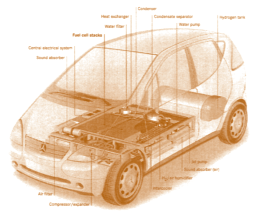 The Blueprint Plan lays out a phased approach. Phase 1, from 2005 to 2010, would put in place 50 to 100 hydrogen stations and approximately 2,000 hydrogen-powered vehicles. Phase 2 would increase hydrogen refueling stations to 250, and the number of vehicles to 10,000. Finally, Phase 3 entails expansion of the hydrogen vehicle fleet to 20,000 as the last precursor to full-scale commercialization. The timing of Phases 2 and 3 depends on technological developments and the outcome of biennial reviews.
The Blueprint Plan lays out a phased approach. Phase 1, from 2005 to 2010, would put in place 50 to 100 hydrogen stations and approximately 2,000 hydrogen-powered vehicles. Phase 2 would increase hydrogen refueling stations to 250, and the number of vehicles to 10,000. Finally, Phase 3 entails expansion of the hydrogen vehicle fleet to 20,000 as the last precursor to full-scale commercialization. The timing of Phases 2 and 3 depends on technological developments and the outcome of biennial reviews.
Initiation of the California Hydrogen Highway Network represents a unique opportunity for alignment of government, industry, and academia to put the state in the forefront of global developments around use of hydrogen and fuel cells. These efforts may be important to both environmental and economic vitality in the state. However, such a dramatic step forward in vehicle technology and energy infrastructure presents huge challenges. It also represents the fascinating intersection of science and technology, human values and behavior, innovation and industry, and politics and government.
Key Issues, Concerns, And Pitfalls
As mentioned, several potential pitfalls face California and its plan. Implications of the California Hydrogen Highway Network initiative with regard to these key points are discussed below.
The first of these concerns—infrastructure investment risk—is addressed in the phased Blueprint Plan where initial investments are relatively small. Future and larger investments are contingent on progress of hydrogen-powered vehicle technologies and vehicle commercialization. The Phase 1 plan (through 2010) is estimated to cost the state $53.5 million over five years, or approximately $11 million per year, with an additional $32.5 million contributed by industry for refueling infrastructure. Additional state money will provide incentives to buy hydrogen vehicles and apply the technology to transit buses, shuttle buses, and off-road equipment.
Figure 1
Hydrogen vehicles have considerable associated costs that must be matched by large benefits relative to competing technologies to make them worth the cost of developing. While hydrogen vehicle technology has progressed greatly over the past fifteen years, conventional vehicles have also improved, and HEVs have emerged. Various hybrid-vehicle designs, including “plug-in” hybrids, vehicles running on bio-fuels, and even electric battery vehicles spurred by advances in battery technology are continually raising the bar that hydrogen vehicles much clear in order to justify their costs.
Hydrogen storage remains an important technical hurdle. Achieving a range equivalent to gasoline vehicles in a system that is sufficiently compact and lightweight, safe and quick to refuel, and cost-competitive has remained elusive. Compressed gas storage at 5,000 psi currently offers practical driving ranges of 100–150 miles for light-duty vehicles without taking up trunk space for a tank, and some new prototypes have achieved up to 250 miles. Ongoing efforts are exploring higher pressure storage at up to 10,000 psi, liquid hydrogen storage, and other solid and liquid forms of storage such as metal hydrides, organic hydrides, and carbon fibers among other options. The Blueprint Plan does not explicitly mandate progress in this area but notes that continued R&D is important.
Figure 2
The costs of hydrogen fuel cell systems have been driven down dramatically in the past fifteen years by improved engineering and design, but remain above cost targets by two to threefold even when projected into high-volume production. Encouraging vehicle production and moving down the learning curve is part of what is necessary to further lower costs, so by stimulating vehicle production the Blueprint Plan may help in this regard. However, the small funding levels proposed do not include additions to basic research on hydrogen and fuel cell technologies currently funded by private industry and the US Departments of Energy and Defense. More basic R&D is critical to addressing remaining technical challenges, but transportation systems in California have until recently been excluded from major state energy R&D programs, such as the Public Interest Energy Research Program administered by the California Energy Commission.
Codes and standards development for hydrogen and fuel cells has progressed well in recent years, but gaps remain. The Blueprint Plan notes this, highlighting several key areas for prioritization. For example, it calls for an annual review of codes and standards for hydrogen, and designates the State Fire Marshall as the chief responsible agent for hydrogen use in the state.
Environmental concerns about hydrogen stem from the vastly different environ- mental consequences of possible hydrogen production pathways. Figure 2 compares results from two different models of emissions from hydrogen generation. As the figure shows, hydrogen can virtually eliminate greenhouse gas emissions relative to conventional vehicles if the hydrogen is made from solar or wind electricity or cellulosic ethanol. However, if hydrogen is made from electricity produced from the average mix of sources used today in the US—which is over fifty percent coal—then greenhouse gas emissions would be considerably increased. As Joan Ogden notes, achieving the benefits available from hydrogen ultimately depends on using clean sources of hydrogen production. The Blueprint Plan addresses hydrogen feedstock concerns by recommending that twenty percent of hydrogen production in California be from renewable sources by 2010, in excess of the Statewide Renewable Portfolio Standard goals for the electricity sector, with levels of renewable hydrogen production to increase annually thereafter. The Plan also recommends goals for reducing greenhouse gas emissions and toxic and smog-forming pollutants.
Key Elements Of A California Hydrogen Energy Transition
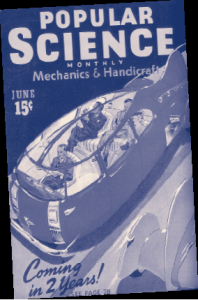 The California Hydrogen Blueprint Plan addresses many of the key issues associated with further development of hydrogen infrastructure and vehicles in California. These efforts will need to be coordinated between government, industry, and academia, with cost burdens and risks shared among parties. The Plan outlines a role for “hydrogen energy stations,” which provide electricity as well as hydrogen, but does not heavily emphasize exploring other important early niches for hydrogen production and distribution. These include landfills with methane that can be converted to hydrogen, other sources of “opportunity” fuels that can be obtained with low or no feedstock costs, opportunities to take advantage of existing hydrogen pipelines with excess capacity such as in Torrance, California, opportunities to combine hydrogen production with wind power, and off-road and heavy-duty applications of hydrogen technology. The Blueprint Plan particularly addresses program financing, timing, and the need for additional codes and standards development. It probably underemphasizes the need for service technician training and other education and outreach efforts. The difficulties involved in the transition to hydrogen will likely be as much organizational and institutional as technical. The plan touches on this, but almost certainly underestimates its importance in supporting the large market changes that will clearly be required.
The California Hydrogen Blueprint Plan addresses many of the key issues associated with further development of hydrogen infrastructure and vehicles in California. These efforts will need to be coordinated between government, industry, and academia, with cost burdens and risks shared among parties. The Plan outlines a role for “hydrogen energy stations,” which provide electricity as well as hydrogen, but does not heavily emphasize exploring other important early niches for hydrogen production and distribution. These include landfills with methane that can be converted to hydrogen, other sources of “opportunity” fuels that can be obtained with low or no feedstock costs, opportunities to take advantage of existing hydrogen pipelines with excess capacity such as in Torrance, California, opportunities to combine hydrogen production with wind power, and off-road and heavy-duty applications of hydrogen technology. The Blueprint Plan particularly addresses program financing, timing, and the need for additional codes and standards development. It probably underemphasizes the need for service technician training and other education and outreach efforts. The difficulties involved in the transition to hydrogen will likely be as much organizational and institutional as technical. The plan touches on this, but almost certainly underestimates its importance in supporting the large market changes that will clearly be required.
Conclusions
California is home to over 36 million people who drive more than 23 million automobiles. Over 1 million new vehicles are purchased each year in California. By 2010 the population of the state is expected to be nearly forty million, and vehicle miles traveled will increase by nearly seventy billion per year. Hybrid vehicles, biodiesel, and other biofuels are potential means to address some of the energy and pollution problems associated with greater automobile use. However, of known solutions, only cellulosic ethanol, electricity, and hydrogen are capable of significantly and simultaneously addressing greenhouse-gas emission, air pollution, energy security, and oil import concerns. All of these options should be vigorously examined and pursued. However, many automotive and energy companies and leading transportation energy analysts are leaning towards fuel cell or combustion engine vehicles running on hydrogen as the best options for the next dominant design in automobiles.
Furthermore, continued development and deployment of clean-energy technologies are critical to California’s future economic growth, human health and welfare, and environmental quality. Hydrogen technologies represent one important part of this future, but it is essential that efforts to promote hydrogen as an energy carrier occur in the context of a broader clean-energy and energy-efficiency strategy for the state, extending into the electricity and industrial power sectors. The costs of transition to the use of hydrogen beyond niche markets are unlikely to be justified unless the benefits of doing so include clean and sustainable hydrogen production. Clean electricity production is especially important, both to benefit the electricity sector and because much of the energy needed for hydrogen production and/or distribution will be in the form of electricity.
It is therefore essential to expand hydrogen use in the broader context of an overall clean-energy strategy emphasizing renewable energy, energy efficiency, and better operation of existing fuel distribution infrastructures. With the many competing needs for government resources in California, the governor’s hydrogen vision must remain closely tied to the state’s environmental goals if it is to earn public support. This broader focus is necessary to garner the benefits of hydrogen if a hydrogen economy is to develop rapidly; but it will also clearly benefit the state even if progress is slow.
The California Hydrogen Highway Network is an important initiative to advance hydrogen and fuel cell research, development, demonstration, and commercialization. What California does as a worldwide leader in this field over the next decade can have a dramatic impact on global efforts to develop clean energy technologies. Hydrogen’s important limitations and obstacles must be respected, but its tremendous promise leads many of us to look to it as the pathway to break a crippling dependence on imported oil. So far, although the California Hydrogen Highway Network has set ambitious goals and timetables, it is deficient in a few key areas, and it has been underfunded by the Legislature for this fiscal year. Achieving program goals will require follow-through for many years into the future, increased traction in the California Legislature, and the steady commitment and participation of California industry, government, academia, and the general public. The landmark year of 2010, as the gateway to “Phase II” of the Hydrogen Highway Plan, is really just a marker post on a much longer journey.
Further Readings
Mark A. Delucchi. A Lifecycle Emissions Model (LEM): Lifecycle Emissions from Transportation Fuels, Motor Vehicles, Transportation Modes, Electricity Use, Heating and Cooking Fuels, and Materials. UCD-ITS-RR-03-04. (Institute of Transportation Studies, University of California, Davis, 2003).
Joseph Romm. The Hype About Hydrogen: Fact and Fiction in the Race to Save the Climate (Island Press, 2004).
Daniel Sperling and James S. Cannon. The Hydrogen Energy Transition: Moving Toward the Post Petroleum Age in Transportation (Burlington, MA: Elsevier Academic Press, 2004).
M.Q. Wang. Development and Use of the GREET 1.6 Fuel-Cycle Model for Transportation Fuels and Vehicle Technologies. Report ANL/ESD/TM-163. (Argonne, IL: Center for Transportation Research, Argonne National Laboratory, 2001).

